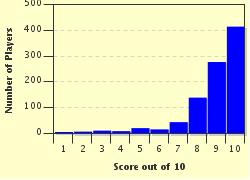Quiz Answer Key and Fun Facts
1. The Ukrainian government named the Livadia Palace on the Crimean peninsula as a monument of modern history, possibly because of an internationally-significant conference that was held there in February, 1945. What was the name of this conference, attended by Franklin D. Roosevelt, Winston Churchill and Joseph Stalin to discuss the post-war restructuring of Europe?
2. Still on the Crimean peninsula, we travel to Sevastapol, where we can visit Khersones Tavriysky. What sort of tourist attraction will we find there?
3. This picture of the DneproGES power plant was taken from the island of Khortytsia, a national cultural reserve that has been continuously inhabited for at least 5,000 years. Across what major Ukranian river was this power station built in the 1930s?
4. Sofiyivsky Park, one of the sites that tied for first place in the competition to find the Seven Wonders of Ukraine, is described variously as an arboretum and as a dendrology park. Which of the following would you therefore expect to be a prominent feature of the park?
5. The Eastern Orthodox cathedral of Saint Sophia celebrated its 1,000th birthday during 2011. In what Ukrainian city, whose name may be more familiar in association with a chicken dish involving garlic butter, can you visit the precinct which placed sixth in the competition to find the Seven Wonders of Ukraine?
6. Near Saint Sophia is another famed religious centre called the Monastery of the Caves. Pictured is the great tower which reaches nearly 100 metres above the ground. What kind of tower is it?
7. The first wooden castle at Ostroh was built in the 12th century, and was destroyed in the 13th century when Kievan Rus was invaded by a group expanding westwards from their original base in eastern Asia. What was the name of the empire established by this group of people, who were originally led by Genghis Khan?
8. The Fortress of Khotyn has a large dark spot on one of its walls. Legends attribute its origins to various incidents associated with the major battle fought at the site in 1621 against invading forces of what origin?
9. When you visit the city of Kamyanets-Podilsky, on the Smotrych River in the western region of Podillia, which of these tourist attractions will you probably be visiting?
10. The Pysanka Museum, located in the southwestern city of Kolomyia, was nominated by the government as a monument of modern Ukraine. So what is a pysanka?
Source: Author
looney_tunes
This quiz was reviewed by FunTrivia editor
trident before going online.
Any errors found in FunTrivia content are routinely corrected through our feedback system.

